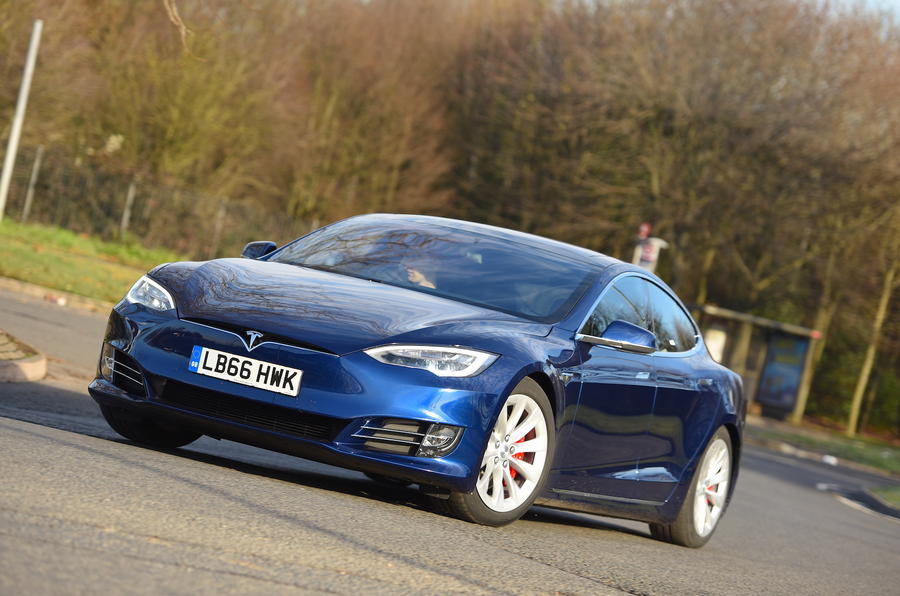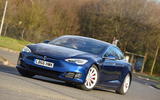What is it?
The Tesla Model S P100D gets its moniker thanks to the addition of a 100kWh battery. It's a hardware upgrade for Elon Musk's company, which can usually be relied upon for an almost constant supply of revisions and software upgrades over the air.
If the official figures for the Model S P100D are to be believed, a range of 381 miles is available from a fully charged battery. Even taking into account the kind nature of official NEDC tests, the real-world range of this electric vehicle should comfortably exceed 250 miles if you drive carefully.
The trouble is that being careful is trickier than you might think. As well as increasing the range, Tesla has increased the Model S's performance to hypercar-hassling levels. A software update for cars with the Ludicrous Speed upgrade (standard on the P100D) now means you can access Ludicrous Plus mode.
This additional technology comes at a hefty price. Allied to a recent 5% price hike blamed on Brexit, the P100D costs £132,700 not including the Government green car subsidy. In other words, it costs nearly twice as much as the basic rear-wheel-drive Model S 60 model.

































Join the debate
Add your comment
Re:
Thanks for the great post.
Range tumbles heavily
The 100kWh battery is more than enough
Range tumbles in all kinds of cars if you drive them hard, its obvious
whalefish wrote:
The difference is that a Ferrari can be refilled in three minutes and doesn't require hours of downtime (not counting the many more which would be spent queuing if more people were dumb enough to buy electric cars). Even more so running dry so on a deserted road miles from anywhere, where a five gallon container will give a petrol car anything up to a couple of hundred miles more range in a minute or two, but there are no electric sockets to be found. Electric cars are going nowhere.
bowsersheepdog wrote:
You're completely naive - and plain wrong. A Tesla does NOT require 'hours of downtime' to recharge. It requires about 40 minutes to get a FULL recharge. With a range of 200-300 miles, this really isn't as bad as it sounds and it certainly suits the vast majority of British drivers.
Your lovely cherry-picked example of running dry in the middle of nowhere is also fantastic. What, in the UK? Very few people actually carry jerry cans of backup fuel with them - they plan their route instead of foolishly getting themselves stranded. And I'm not talking about EVs here. I'm talking about petrol or diesel. The same applies to EV owners -- they don't use the vehicle for a purpose it isn't intended for, and if they do, they take backup precautions precisely SO they don't end up stranded.
"Electric cars are going nowhere." -- This is perhaps your most clueless and ignorant comment of all. It doesn't take a basic studying on EVs and their news to realise that they've actually been growing year-on-year exponentially, they ARE the future, batteries ARE getting roughly 20% better in terms of capacity and cost-effectiveness each year, AND most automakers realise this. Electric cars ARE the future. It's that simple, and it doesn't take a half-blind fool to see this. Mark my words, a tipping point is rapidly approaching. Most of the auto industry have penned the tipping point somewhere around 2025.
WDavis4692 wrote:
Why all the random capital letters? You may as well have written it in crayon. You're correct on one thing though. Half-blind fool is the standard to which those who promote the adoption of electric cars aspire. Electric cars are going nowhere.
Idiot
you are a neoluddite niddynot. ICEs are going to be phased out in a couple of decades. Their tech has pretty much plateaued. rudimentary battery technology already batters even the most exotic & expensive supercars. Not long to wait until Bmw & Porsche etc. have properly developed electric cars. I done the bad grammar and punctuation to parody your intellectual cretinism
Ok Tesla, you've made your point...
Cobnapint wrote:
As I understand (I might be wrong) the greater the battery capacity, the longer the range, and the better the performance. The insane performance might just be the side benefit of improving range. I suppose the closer the driver is to a charging point, the more he can exploit the car's performance.
Dummy
I don’t see you making similar comments regarding performance cars with sub 300 mike ranges. Electricity sockets are far more common than fuel pumps